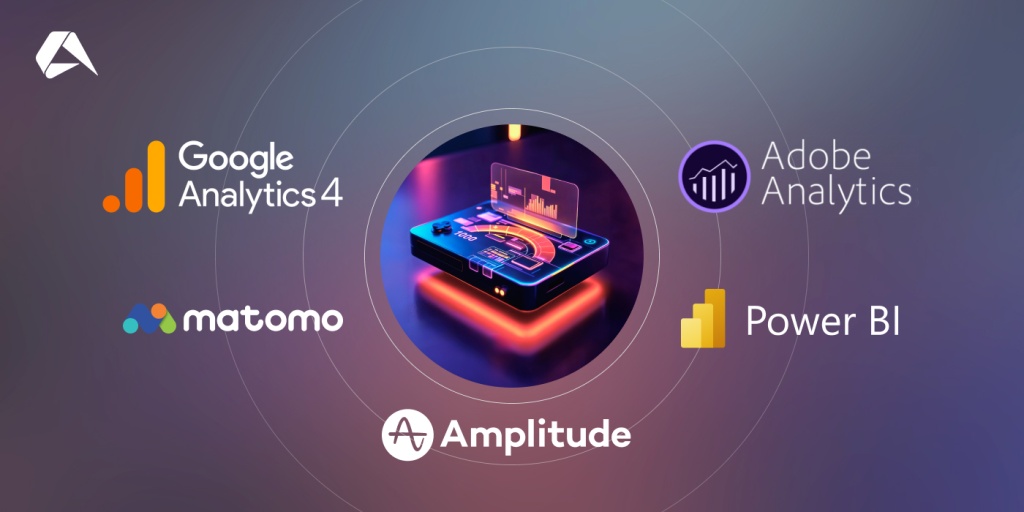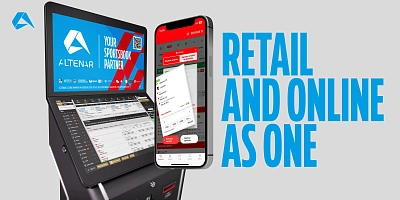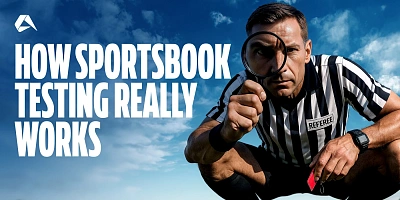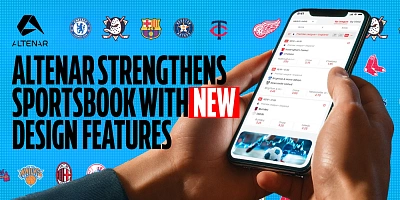In today’s data-intensive iGaming industry, having the right information and insights is only part of the equation. Knowing what to do with it is equally important. Whether you’re running a sportsbook, casino, or both, understanding player behavior, fine-tuning promotions, and spotting issues in real time depend on access to the right analytics tools.
This guide explores the leading platforms powering that intelligence, providing invaluable insight into what they do, how they differ, their ultimate value, and why choosing the best options for your goals can be the turning point for growth, profitability, and long-term competitive advantage.
Primary Analytics Platforms in iGaming

In the iGaming industry, two analytics platforms stand out as essential for operators aiming to understand their players better and make smarter business decisions: Google Analytics 4 and Microsoft Power BI. GA4 is excellent at tracking and clarifying player interactions, highlighting exactly how users find and engage with gaming sites. Power BI complements this perfectly, translating complex data into visual dashboards that operators can quickly grasp.
Together, these platforms deliver a complete analytics solution, giving operators the advanced insights needed to attract new players, boost revenue, and keep their audience coming back.
Google Analytics 4
Google Analytics 4 (GA4) represents a significant evolution in digital analytics, offering iGaming operators a comprehensive view of player interactions across websites and mobile applications. Its event-based tracking system captures detailed data on user activities, allowing operators to gain deeper insights into player behavior and engagement. This comprehensive approach is particularly beneficial for iGaming platforms aiming to understand and enhance the player journey across multiple interactions.
GA4’s Practical Applications in iGaming include:
-
Player Acquisition Tracking
GA4 provides operators with detailed insights into where new players originate, identifying the most effective traffic sources, such as paid advertisements, affiliate campaigns, or organic search. This capability allows for strategic allocation of marketing budgets, improving player recruitment efficiency and return on investment.
-
User Behavior Analysis:
With GA4's path exploration and event-tracking tools, operators can map user interactions in detail, revealing popular game categories, features, and points of friction. By visualizing these user journeys, platforms can optimize user experience to help minimize player drop-off and increase session durations.
-
Marketing and Conversion Tracking:
GA4 also integrates with Google Ads, giving operators the means to track specific player actions (such as deposits or registrations) as conversion events. Such integration allows operators to continuously evaluate and refine marketing campaigns to meet spending targets and improve overall campaign effectiveness.
GA4's comprehensive tracking capabilities, predictive insights, and integration across multiple platforms deliver substantial advantages to operators seeking refined insights. Nevertheless, its complexity can prove to be a challenge for inexperienced users. Furthermore, the platform’s tendency toward data sampling in large datasets may sometimes affect precision, necessitating a cautious interpretation of insights.
Microsoft Power BI
Microsoft Power BI has evolved into a powerful analytics tool which is particularly advantageous to iGaming operators who rely on swift, data-driven decisions. With its sophisticated visualization features and extensive data connectivity, Power BI allows operators to condense large datasets into clear, actionable insights. This ability to transform complex raw data into intuitive visual stories is especially useful in an industry where precision and timing can make the difference between success and missed opportunities.
Practical Applications for BI in iGaming:
-
Advanced KPI and Revenue Reporting
Power BI gives operators the ability to transform complex financial data into intuitive, interactive dashboards that clearly illustrate key performance indicators such as Gross Gaming Revenue (GGR), Net Gaming Revenue (NGR), and Average Revenue Per User (ARPU). By providing visual clarity and real-time insights, operators can quickly identify emerging trends and profitability enhancements and promptly respond to potential revenue fluctuations.
-
Custom Player Segmentation and Behavior Analytics
Leveraging Power BI’s sophisticated analytical capabilities, iGaming operators can segment players into meaningful groups based on their betting habits, preferred games, spending patterns, and frequency of activity. This granular segmentation helps operators create targeted marketing strategies, personalize player engagement, and boost retention and player lifetime value.
-
Real-time Operational Dashboards
Power BI’s ability to display live operational data ensures that operators remain constantly informed about the platform's current state. This enables swift reactions to events such as unusual betting activities or dips in system performance. Real-time dashboards improve operational responsiveness, helping iGaming professionals maintain consistent service levels and quickly identify and resolve issues.
Power BI’s advanced visualization capabilities and integration across multiple data sources offer significant advantages, making complex analytics accessible and actionable for operators. However, these strengths come with drawbacks. Its steep learning curve and intricate setup can present obstacles, particularly for teams with limited business intelligence experience.
Moreover, handling extensive real-time data can occasionally cause performance issues, requiring proactive optimization and technical oversight. Power BI delivers exceptional analytical value despite these complications, provided operators invest sufficient resources to access its full potential.
Integrating Google Analytics (GA4) with Power BI
Combining Google Analytics 4 with Power BI gives iGaming operators deeper and clearer insights into player activities. This helps businesses understand exactly what's working and what's not in their games and promotions. Operators can quickly spot trends and make confident decisions by bringing detailed player behavior data from GA4 into Power BI’s easy-to-read dashboards.
How to Combine GA4 and Power BI (In Simple Steps):
-
Step 1: Connect GA4 to Power BI
First, operators must link Google Analytics 4 to Power BI using a simple built-in connector. This is as easy as logging into both services and selecting GA4 as your data source.
-
Step 2: Select Relevant Data
Operators select important data from GA4, such as player sign-ups, most-played games, or spending habits. This ensures that only meaningful information is sent to Power BI for analysis.
-
Step 3: Create Visual Dashboards
In Power BI, operators can build visual reports using charts and graphs. These visuals clearly show real-time player trends, marketing performance, and revenue figures.
-
Step 4: Keep Data Up-to-date
Regularly updating data ensures that operators have the most accurate insights, helping them react quickly to changes or new opportunities.
This integration provides tangible benefits for operators. It simplifies complex player data, allowing operators without technical backgrounds to see which promotions or games drive results quickly. It also saves time by clearly showing the most essential insights, enabling smarter marketing decisions and better player retention without getting lost in complicated reports.
Other Analytics Options to Consider
Beyond GA4 and Power BI, there are a number of alternative analytics tools that can help iGaming operators further understand player needs and improve operational insights. These alternative platforms can be particularly helpful when operators require specialized capabilities such as enhanced privacy, precise player segmentation, or more profound insights into specific player behaviors.
Evaluating these additional platforms allows operators to discover features uniquely suited to their business goals, ultimately helping marketing professionals gain a competitive advantage in increasing player lifetime value, user experience, and revenue growth.
Matomo (formerly Piwik)
Matomo is an analytics platform specifically focused on privacy. It gives iGaming operators complete ownership and control of their player data. This makes it particularly suitable for businesses operating within tightly regulated markets, where alignment with GDPR and other data protection laws is mandatory.
Unlike cloud-hosted services, Matomo allows operators to self-host their data, strengthening both control and compliance. This on-site flexibility enables operators to manage sensitive player information directly without relying on third-party infrastructure. For those operating in jurisdictions with strict privacy regulations, Matomo offers a compelling solution: reliable analytics paired with full data ownership. It simplifies regulatory audits, reduces risk exposure, and helps operators meet data protection requirements without sacrificing insight or performance.
Adobe Analytics
Adobe Analytics is another premium analytics solution that is highly customizable for large-scale iGaming operations that handle vast amounts of player data. It goes beyond basic reporting, allowing operators to segment players deeply based on their gaming habits, preferences, and interaction history. Such in-depth segmentation helps operators deliver precisely targeted promotions, reduce player churn, and increase engagement across multiple platforms.
Adobe’s capability to integrate data from numerous channels, such as websites, mobile apps, and even marketing campaigns, provides operators with a holistic view of player interactions. This multi-channel insight is invaluable for iGaming brands aiming to refine their player experience and strategically raise their game in competitive markets through personalized content and more intelligent marketing decisions.
Amplitude
Amplitude is an analytics platform specializing in player behavior and product insights widely adopted across the gaming sector. It provides iGaming operators with tools that reveal exactly how players interact with games, identify features that resonate, and spotlight those causing drop-offs (departures). With Amplitude, operators can accurately test new features and optimize user journeys to enhance player engagement and retention while avoiding costly mistakes.
Its insights into engagement patterns allow platforms to pinpoint when and how to intervene with personalized offers, bonuses, or promotions. Given its proven track record in the broader gaming industry, Amplitude is typically considered a strategic wildcard, further allowing operators to refine acquisition and retention strategies, increase customer loyalty, and ultimately boost long-term profitability.
Summary Table of Analytics Platforms
The table below clearly compares analytics platforms for iGaming operators, highlighting their main features, strengths, practical applications, and potential limitations.
| Platform | Key Features | Primary Use in iGaming | Strengths | Limitations |
|---|---|---|---|---|
| Google Analytics 4 (GA4) | Event-based tracking, cross-platform integration, predictive analytics | Player acquisition, marketing analytics, behavior tracking | Comprehensive insights, predictive capabilities | Steep learning curve; data sampling |
| Microsoft Power BI | Advanced data visualization, multi-source integration, real-time analytics | Financial reporting, player segmentation, custom analytics | Powerful dashboards, broad integration options | Complex setup; potential performance issues |
| Matomo | Open-source, privacy-focused, complete data ownership | GDPR compliance, privacy-focused data management | Strong privacy compliance, full data control | Resource-intensive if self-hosted |
| Adobe Analytics | Enterprise-grade custom analytics, detailed segmentation | Multichannel data analysis, deep behavioral insights | Highly scalable, advanced segmentation capabilities | High cost; complex to implement |
| Amplitude | Behavioral analytics, real-time user engagement insights | Player retention, feature optimization | Proven performance in gaming; user-friendly interface | Limited iGaming-specific case studies |
Analytics-Driven Growth in iGaming
By using advanced platform technologies for analytics, operators can achieve significant growth by intelligently applying the insights these tools deliver. A strategic, data-informed approach allows operators to anticipate player behavior, fine-tune marketing efforts, and substantially improve profitability. Analytics dramatically enhances platform growth in three main areas: player retention, acquisition efficiency, and overall profitability.
Player Retention
Analytics allow operators to spot potential player churn before it happens. By analyzing player activity patterns, operators can identify warning signals of reduced engagement and intervene with timely actions such as tailored bonuses or loyalty rewards. Personalized retention campaigns, guided by precise data, encourage players to stay actively involved, thereby increasing lifetime value and protecting revenue streams in the long term.
Acquisition Efficiency
Data-driven analytics lets operators see which marketing channels and promotions deliver the best-quality players. Attribution accuracy means that each marketing dollar spent generates maximum impact, transforming casual visitors into active players through optimized conversion funnels. Operators using analytics effectively can refine their acquisition strategies continually, consistently outperforming less-informed rivals.
Profitability
Operators who tap into real-time revenue analytics gain immediate visibility into game performance and promotional effectiveness. Clear insights into player value, such as Lifetime Value (LTV) and Average Revenue Per User (ARPU), allow businesses to concentrate resources on high-performing products and promotions, optimizing their offering to deliver increased revenue and sustainable profitability.
Mistakes to Avoid When Selecting an Analytics Platform
One frequent mistake operators make, particularly those new to advanced analytic technologies, is failing to clearly define specific analytics goals before choosing a platform. Operators sometimes rush to adopt powerful analytics solutions without pausing to determine precisely what insights they need to drive decisions and growth. Without clearly defined goals, sophisticated analytics tools can soon feel overwhelming, resulting in confusion rather than clarity.
Taking time to outline exact analytical requirements at the outset allows users to select platforms truly suited to their needs, making informed, strategic leadership decisions more straightforward and effective.
Equally important is matching the chosen analytics platform to the internal skills and resources available within the team. An overly complicated system can drain resources, slow productivity, and result in valuable analytics features remaining unused or poorly understood. Easier, user-friendly platforms often deliver superior outcomes. For example, one might choose straightforward solutions like Google Analytics 4 instead of adopting more complex enterprise-level tools like Adobe Analytics or use intuitive platforms like Matomo instead of highly technical setups that require extensive in-house expertise.
Choose options that teams can confidently apply, even without extensive technical expertise. Aligning platform selection with existing skill levels ensures that analytics tools enhance, rather than hinder, operational efficiency.
Finally, overlooking the importance of scalability and future-proofing can severely limit long-term business growth. Platforms chosen for their current suitability might quickly fall short as player numbers rise, markets expand, or data demands escalate. Forward-looking operators anticipate these changes, carefully evaluating whether analytics platforms can scale smoothly alongside their business ambitions.
Selecting adaptable, scalable analytics solutions from the beginning ensures that the insights operators depend upon today remain relevant, valuable, and actionable in the years ahead.
The Future of Analytics in iGaming
Analytics in iGaming has come a long way from static dashboards and basic reporting. Today’s platforms already offer behavioral insights, marketing attribution, and real-time dashboards. But what comes next is far more ambitious. As the industry pushes forward, analytics is set to become one of the most transformative forces in how operators compete, optimize, and grow. And in an industry where tech never stands still, staying ahead of the curve will become necessary to maintain competitiveness.
Predictive and AI-driven analytics is one of the most exciting areas in the future evolution of data intelligence and insights. Instead of simply reacting to past events, operators are beginning to anticipate player behavior in real time, like spotting drop-off risks before they happen, adjusting offers dynamically, and recommending games based on current individual playing styles.
Meanwhile, real-time decision-making will likely remain a priority moving forward. Operators are shifting away from end-of-day reports and moving towards analytics that alert them to performance dips, fraud indicators, or customer support issues the moment they occur. The emphasis on speed and efficiency is the significant differentiator.
At the same time, compliance and privacy analytics are becoming increasingly significant. With evolving regulations like GDPR and AML, platforms must not only track behavior but also prove responsible data handling.
Looking ahead, advanced iGaming software providers like Altenar are already preparing to meet these needs head-on with planned software builds that automate analytics environments and lighten the load for operators. The aim is to provide online sportsbook and casino partners with sharper, faster insights to gain significant and substantial market advantages.
Discover the difference precision analytics can make. Book a demonstration of Altenar’s advanced iGaming technology now and explore how integrated dashboards, predictive modeling, and scalable reporting can future-proof your operation and keep your platform two steps ahead of the competition.













